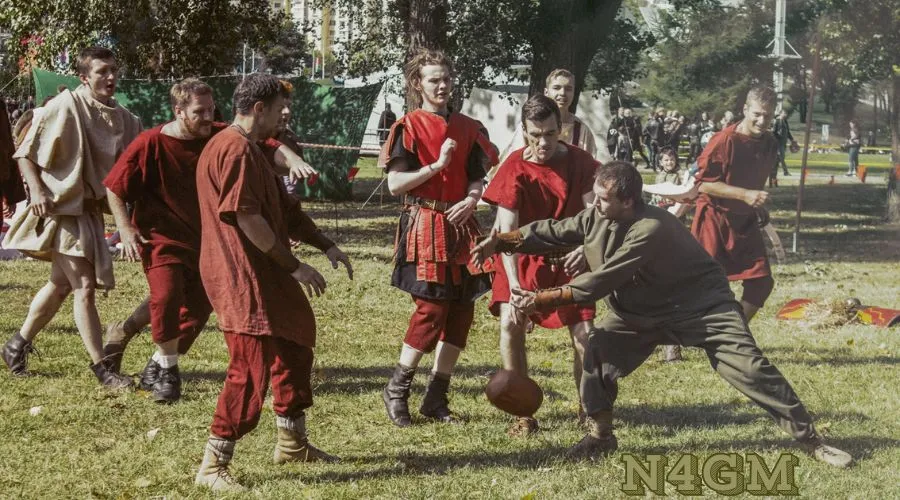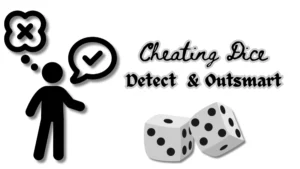Harpastum, or Harpustum, was a fast, lively ball game. It captivated players in the Roman Empire. This name came from the Greek “ἁρπαστόν”, meaning “something seized.” It was a smaller version of bigger ball games like the follis and paganica.
This team sport, loved by adults and kids, requires speed, agility, and great effort. It was like modern sports, such as rugby and American football. But it had its own rules and style. This article will explore the origins of the game, its gameplay, and some intriguing but overlooked details.
Origins Of Ancient Roman Game
1. Etymology
The term “Harpastum” comes from the Latin “harpastus.” It, in turn, comes from the Greek verb “harpazein,” meaning “to seize” or “to snatch.” This name reflects the game’s nature. Players aimed to seize the ball from their opponents. According to some rumors, the name may relate to “harpago,” a term for a grabbing tool. It emphasizes the physicality of the game.
2. Historical Context And Development
It likely originated during the Roman Republic, around the 5th century BC. This period marked the game’s early development. It was influenced by earlier Greek sports.
The game drew inspiration from Greek games such as episkyros and phaininda. Episkyros was a team sport. Players aimed to throw the ball over a line while blocking the other team from doing the same. Phaininda, on the other hand, used deceptive ball passing. This also affected its gameplay.
As the Roman Empire expanded, this game gained popularity among both soldiers and civilians. It became popular with the common folk and children. Its simple equipment needs and adaptability to various playing environments made it so.
Unlike the grand spectacles of gladiatorial combat and chariot racing, it was a fun game. It offered a casual, fun alternative to costly Roman shows.
Rules And Gameplay
1. Objective Of The Game
The main goal of this game was to keep the ball in your team’s area. You had to stop the other team from getting it. Unlike some ancient games, the focus was on controlling the ball. It was not on scoring points in a traditional sense. The game was played on a rectangular field divided by a central line. Each team aimed to dominate their half.
2. Team Composition
This was typically played with two teams, each consisting of about 10 to 14 players. The number of players could vary based on the size of the field and the preferences of the participants. Each team would occupy one-half of the field. The game required all players to be fast, strong, and agile.
3. The Playing Field
The field was rectangular. Boundary lines marked the sides. A central line divided the two teams. The field’s dimensions are unknown. But, it was designed for the game’s fast pace. Players could use any part of their body to control the ball, but they primarily used their hands to pass it.
4. The Ball
The ball used in this ancient Roman game was small and hard, similar in size to a modern softball. It was usually made of leather, animal skin, or reeds. It was filled with feathers, grass, or rags. This design allowed for a solid yet manageable ball that could be easily thrown and caught.
5. Basic Rules And Gameplay
- Starting the Game: The game likely began with a coin toss to choose which team would start with the ball. Players would position themselves on their respective sides of the field.
- Possession and Passing: Players could pass the ball among teammates using their hands. They aimed to keep the ball and advance it in their half. Players were encouraged to deceive opponents with fakes and jukes.
- Defense and Tackling: The game allowed for physical contact, including tackling and wrestling holds. Players could use these tactics to disable opponents and get the ball back. This aspect of the game contributed to its reputation for violence and physicality.
- Interceptions and Fumbles: If an opponent intercepts a pass or causes a fumble, they could try to return the ball. This created a dynamic back-and-forth as teams vied for control.
- Scoring Points: Historians suggest that points came from time of possession or successful passes within a team’s area. Some say a team could score by holding the ball on their side for a time.
- Out of Bounds: If the ball went out of bounds, play would stop. The team that did not touch the ball last would throw it back in from the sideline, like modern soccer throw-ins. This throw-in did not score any points.
- Game Duration: Matches could continue until one team reached a set number of points, possibly 21, or until a time limit was reached.
Unique Features & Unknown Facts
- Cultural Significance: It was more than just a game. It was a part of Roman culture and was often played during festivals and public events. The sport was a way for Romans to demonstrate physical skill and bravery.
- Training for Soldiers: The game was not only for fun; it also had practical purposes. Roman soldiers practiced it as part of their training. The game’s physicality helped them develop battle skills. They gained agility, strength, and teamwork.
- Variations Across Rome: The Roman Empire had regional versions of this sport. Some areas are played with different rules or on different-sized fields. This diversity shows how the game adapted to local customs and preferences.
- The Ball: The ball used in the sport was quite unique. It was often called small and hard. But, some said it could be heavy. This added to the challenge of the game and made it even more physically demanding.
- Religious and Ritual Aspects: In some Roman communities, It had religious or ritual significance. Certain games were played in ceremonies and festivals to honor gods. The games were seen as a way to show devotion and celebrate Roman traditions.
Skill Required
- Physical Fitness: High endurance, speed, and agility to keep up with the fast-paced game.
- Throwing and Catching: Accurate passing and reliable catching skills to maintain possession of the ball.
- Deception and Agility: Skill to fake and change direction to evade opponents and create passing chances.
- Wrestling and Tackling: Proficiency in grappling techniques to disable opponents and regain control of the ball.
- Teamwork and Strategy: Effective communication and coordination with teammates to develop strategies and execute plays.
- Stamina and Determination: Mental toughness and stamina to endure the game’s demands and overcome challenges.
Current Adaptations
It is an ancient Roman sport but is now lost to history. But, it still influences some modern sports. Its rough, energetic nature inspired many modern games. Let’s explore how this game has impacted modern sports and how its spirit lives on today.
Its Influence on Modern Sports
1. Rugby
Rugby is perhaps the most direct descendant of Harpastum. Both sports share a number of similarities, including:
- Physical Play: Like the ancient Roman game, rugby is known for its physical intensity. Tackling and scrumming are key to the game. They reflect the rough nature of ancient Roman sport.
- Team Structure: Both games involve team strategies and coordination. In rugby, as in Harpastum, players work together. They must advance the ball and defend against the other team.
- Ball Handling: Rugby players handle the ball with their hands and feet. This is like how ancient sport players used their hands and bodies to control the ball.
2. Soccer (Football)
Soccer also shows some connections to this sport, particularly in its early forms. Key similarities include:
- Objective: Both sports have a goal-oriented objective. In soccer, the aim is to score goals. This means getting the ball into the opponent’s net.
- Field and Teams: Soccer’s rectangular field and team structure come from Harpastum. But, soccer now has standardized team sizes and field dimensions.
- Ball Control: Soccer requires great ball control. Players use various techniques to move and manage the ball.
Soccer has a different style and set of rules. Its principles trace back to ancient games.
3. American Football
American football is similar to this game. They share a focus on physical contact and strategy.
- Tackling: The tackling in American football is like the aggressive play in ancient sports. Both sports require players to use their bodies to gain control of the ball and advance it.
- Strategic Play: Both sports emphasize strategic planning and team coordination. In American football, teams work together to overcome their opponents.
Though American football has its own rules and a different ball. It shares its rough, strategic play.
FAQs
Each team typically had 7 to 12 players, though this number could vary depending on local customs.
Q2. What was the main objective of this game?
The main objective was to get the ball past the opponent’s goal line. Teams used various methods, including passing, kicking, and carrying, to achieve this.
Q3. What was the ball made of in this game?
It was usually made of leather, animal skin, or reeds. It was filled with feathers, grass, or rags.







